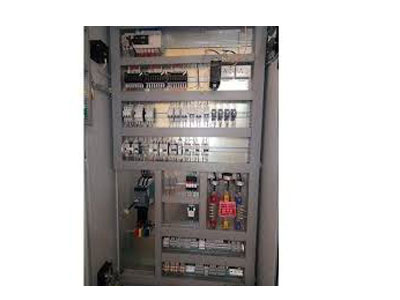What Are The Types Of HMI Control Panels?
Key Takeaway
The main types include pushbutton replacers, which replace physical buttons with digital interfaces for better control. Data handlers are used to display real-time data, monitor trends, and help manage processes. Overseer HMIs provide complete control and monitoring, featuring complex data visualization, alarms, and real-time management capabilities.
Other HMI types include standard touch panels that connect to various PLCs, web panel HMIs with built-in HTML5 for web applications, and outdoor-readable HMIs designed to minimize glare. Maritime HMIs meet shipbuilding regulations, while edge-of-network HMIs allow operators to access data from field devices. The type of HMI chosen depends on the application and user needs, with screen sizes typically ranging from 3 inches to 25 inches.
Standalone HMI Panels
Standalone HMI panels are self-contained systems that connect directly to machinery or equipment. These panels are designed to handle the control and monitoring of a single machine or process. Standalone HMIs are ideal for applications that do not require integration with larger networks but still need comprehensive visual display and user interaction. They are commonly found in smaller machines or specific production line stations where simplicity and cost-effectiveness are priorities. Their user-friendly interfaces make them perfect for operators who need straightforward functionality without complex configurations.

Networked HMI Panels
Networked HMI panels are used in environments where multiple machines or processes need to be monitored and controlled from a centralized location. These panels are connected to a network, allowing for real-time data exchange and remote operation. Networked HMIs support advanced communication protocols such as Ethernet, OPC, and Modbus, enabling seamless integration with other automation systems like PLCs (Programmable Logic Controllers) and SCADA (Supervisory Control and Data Acquisition) systems. This type of HMI is ideal for large industrial facilities that require coordinated control over various processes and equipment.
Web-Based HMI Solutions
Web-based HMI panels leverage internet connectivity to offer remote access and control. These HMIs are browser-based and can be accessed from different devices, including computers, tablets, and smartphones. With web-based solutions, operators and engineers can monitor and control industrial processes from anywhere, enhancing flexibility and response time. This type of HMI is becoming increasingly popular due to its ability to integrate easily with IoT (Internet of Things) systems, providing an efficient way to collect and analyze data. Web-based HMIs offer convenience, real-time data sharing, and improved accessibility for distributed teams.
Touchscreen vs. Keypad-Based HMIs
HMI control panels can be further categorized based on their input methods. Touchscreen HMIs have become the standard due to their intuitive interface, allowing operators to simply tap or swipe to navigate menus and commands. These panels enhance user experience by making interaction more natural and faster. On the other hand, keypad-based HMIs offer a more traditional approach with physical buttons for navigation. While they may not be as modern as touchscreens, keypad-based HMIs are valued in environments where durability and resistance to harsh conditions are necessary, such as heavy industrial settings.
Industry-Specific HMI Variants
Some HMI panels are designed to meet the specific needs of certain industries. For instance, in the food and beverage industry, HMIs are built to be compliant with hygiene standards and may feature antimicrobial surfaces and easy-to-clean designs. In hazardous environments, explosion-proof HMIs are required to prevent accidents. Other industry-specific HMIs may come with specialized software that supports particular processes like batch control, energy monitoring, or robotic operation. By tailoring HMIs to specific industries, manufacturers can ensure optimal performance and safety compliance.
Conclusion
HMI control panels are indispensable in industrial automation, providing the interface for operators to communicate with machines. From standalone models to advanced web-based systems, and from touchscreen to keypad-based controls, the range of HMI panels ensures that businesses can select solutions that meet their unique needs. By understanding the types of HMIs available, engineers and operators can choose the right panel for their application, boosting efficiency, safety, and overall productivity.
